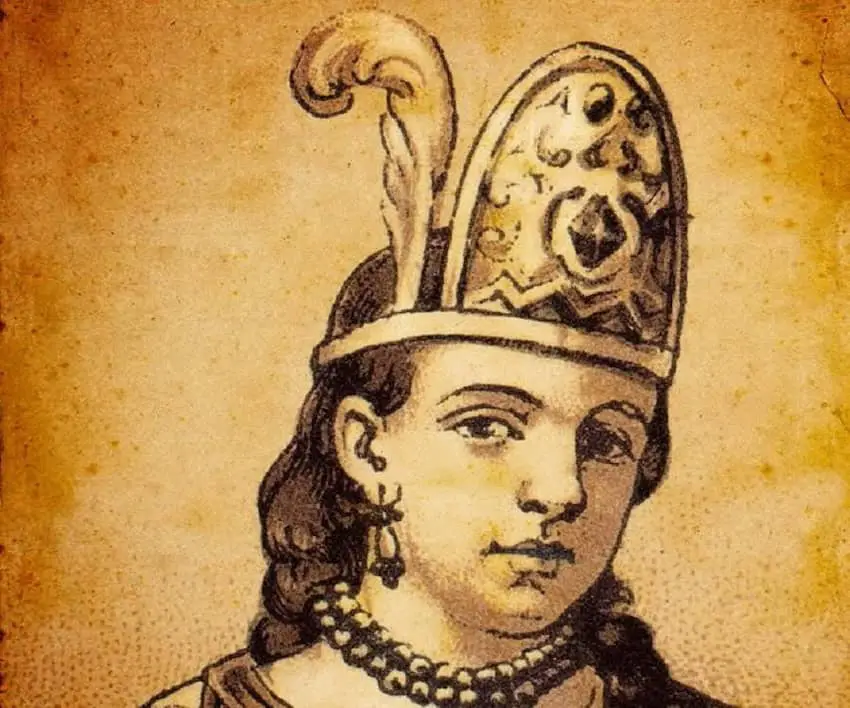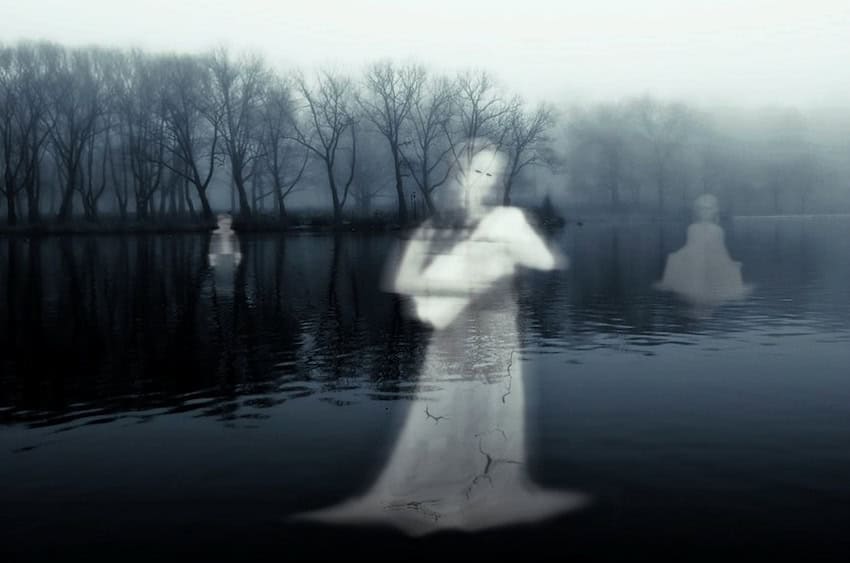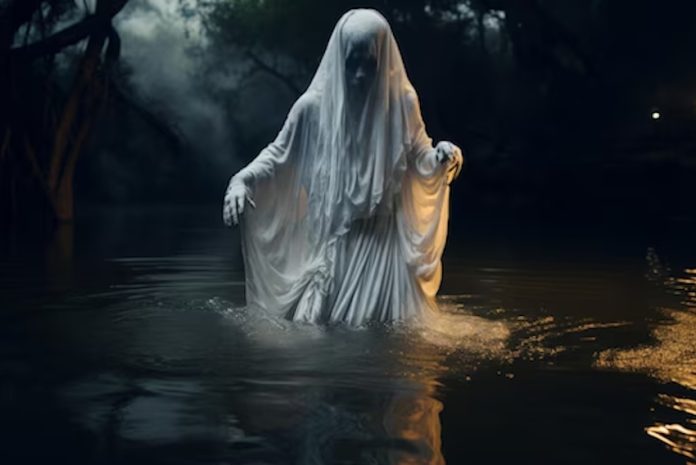Mexico is a land of myths and legends, and every region has its own based on its history. But the best-known and most popular throughout the country is the Legend of La Llorona, the weeping woman. La Llorona is a ghostly apparition that walks through the streets at night weeping inconsolably — grieving and looking for her children — screaming, “Oh, my children, where are my children?”
Although the story has many variations, some details remain the same among everyone who tells the tale. She is described as an attractive woman wearing a long white dress that either hides her feet or she has no feet, she has a veil covering her face, if she sounds close, she is far away, if she sounds far away, she is very, very close and you should start running. It is said that no one has seen her “close up” because to do so means certain death. Seeing La Llorona is known to be an omen of misfortune and death for you, your family, or your community.

Different versions of the Legend
There are three basic versions of the legend. La Llorona first appeared in Mexican culture in the 16th century and features Cihuacóatl — the divinity associated with pregnant women, water, and life. Missionary Fray Bernardino de Sahagún wrote of eight omens the Mexica experienced before the conquest.
One omen tells of a female entity that walks from Lake Texcoco and wanders the streets of Tenochtitlan in the dark of the night. According to Sahagún, Moctezuma witnessed Cihuacóatl just before the conquistadors arrived to conquer his empire. She was sobbing uncontrollably saying “Oh my children, where will I take you? My little children, we have to go far away.”
Miguel León Portilla, author of The Vision of the Vanquished, Indigenous Relations of the Conquest, writes that there is a record of the predictions that the priests interpreted for Moctezuma. One of these predictions says that strange men will come from the East. Your people will suffer many tears and great sorrow, and your race will disappear. They say that is why the goddess Cihuacóatl wandered the streets crying and warned that misfortunes would soon come to the empire.

Another version from the 16th century features the Nahua woman Malinche, one of 20 enslaved women gifted to the Spaniards. Hernán Cortés chose her as his consort, but she also became his interpreter, advisor, and liaison with the Mexica and a lynchpin in their eventual conquest. Malinche has a mixed reputation today, seen as the symbolic mother of the new Mexican people that emerged from the union of Spaniards and Mexica — she had a son, Martín, with Cortés — but also as a traitor to her people.
She was said to wander the streets of Tenochtitlan distraught over her betrayal and lamenting the loss of her son Cortés took back to Spain with him.
The most famous Llorona is called María
However, the most famous and best-known version of the legend is the story of María. María was an indigenous woman of incomparable beauty who caught the eye of a rich and handsome Spanish nobleman. She fell madly in love with him and together they had three children. She was devoted to the man and her children and many times he said one day they would marry, but he avoided her in public afraid of what people might say about their relationship.
One day he abruptly left her to marry a prestigious Spanish lady of the upper class. María completely lost her mind, engulfed in rage and despair at being betrayed. She decided to exact her revenge in an unimaginable way. She gathered her children and took them to Lake Texcoco, hugged them tightly saying she loved them, and then drowned them in the lake. She almost immediately realized what she had done and was so distraught she took her own life.

It is said that the woman’s soul is not at rest, and she was cursed, condemned to wander the streets eternally in search of her children. She walks the streets every night wearing a long white dress – presumably the dress she prepared for her wedding – in deep remorse and despair lamenting what she did with screams and cries of “Oh my children.”
The floating gardens of Xochimilco in Mexico City are one of the locations where people report hearing the crying of La Llorona and the occasional sighting.
The Crypt of La Llorona is said to be in Dolores Hidalgo
However, ghostly apparitions are not only seen and heard regularly in Mexico City. The legend is most popular in Guanajuato and Puebla. It is said La Llorona is buried in a crypt in the town of Dolores Hidalgo, Guanajuato – four hours outside of Mexico City.
According to some account, accounts, authorities sent friars to investigate the situation and spend the night there to verify the occurrences. The friars were surprised and frightened when they too heard the crying and sobbing. They informed the Vatican that they would install a plaque identifying it as the tomb of “La Llorona” in hopes of giving her a resting place, bringing some peace to her wandering soul.
But she continued to appear so frequently in Dolores Hidalgo that the people again beseeched the Vatican to help them. Representatives were sent to exorcise the ghostly presence in a desperate attempt to stop the tormenting of the inhabitants in the area but the apparition sightings and wailing continued.
In a further attempt to dispel her presence the landowner where the crypt is located placed a large cross over her grave. Perhaps as a sign, during an intense storm, with a clap of thunder, lightning struck the cross, splitting it in half and damaging the crypt.
The Legend of La Llorona is deeply rooted in the Mexican culture. The story is often told to children to discourage them from wandering off in the dark near bodies of water like rivers or lakes.
On Day of the Dead there is always at least one lone woman singing the haunting and sorrowful song of La Llorona. The song originated in Tehuantepec, Oaxaca. There are more than 500 different versions, and it is known internationally. La Llorona has been recorded by a multitude of singers, musicians, and musical groups, too many to list. You may remember hearing it if you’ve seen the animated film Coco. Books have been written; films produced as well as theatrical presentations on the legend of La Llorona.
Every year coinciding with Day of the Dead since 1993 there has been a waterfront performance of La Llorona set in the canals of the Xochimilco borough of Mexico City.
Sheryl Losser is a former public relations executive, researcher, writer, and editor. She has been writing professionally for 35 years. She moved to Mazatlán in 2021 and works part-time doing freelance writing. She can be reached at AuthorSherylLosser@gmail.
